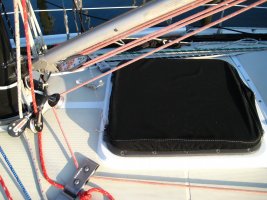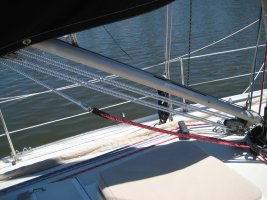Novice sailor question/observation here:
In what situation(s) do you find that your boom vang adds value to your sailing?
My main sheet connection points are only 2-3 feet outboard of the vang connection. The vang pulls down at a forward angle, while the main sheet pulls straight down toward the top of the cabin, but in both cases I am pulling the boom down. I suppose the vang would permit me to pull down on the boom and keep the sail flat even if I am sheeted out all the way going downwind.
I'm sure I need to learn more about sail trim, but if anyone can enlighten me as to when I should expect my vang to make a substantial difference in the performance of my boat (or your own boat) I would appreciate it.
My own vang has been used decoratively for the most part up until now.
Thanks in advance.
In what situation(s) do you find that your boom vang adds value to your sailing?
My main sheet connection points are only 2-3 feet outboard of the vang connection. The vang pulls down at a forward angle, while the main sheet pulls straight down toward the top of the cabin, but in both cases I am pulling the boom down. I suppose the vang would permit me to pull down on the boom and keep the sail flat even if I am sheeted out all the way going downwind.
I'm sure I need to learn more about sail trim, but if anyone can enlighten me as to when I should expect my vang to make a substantial difference in the performance of my boat (or your own boat) I would appreciate it.
My own vang has been used decoratively for the most part up until now.
Thanks in advance.


